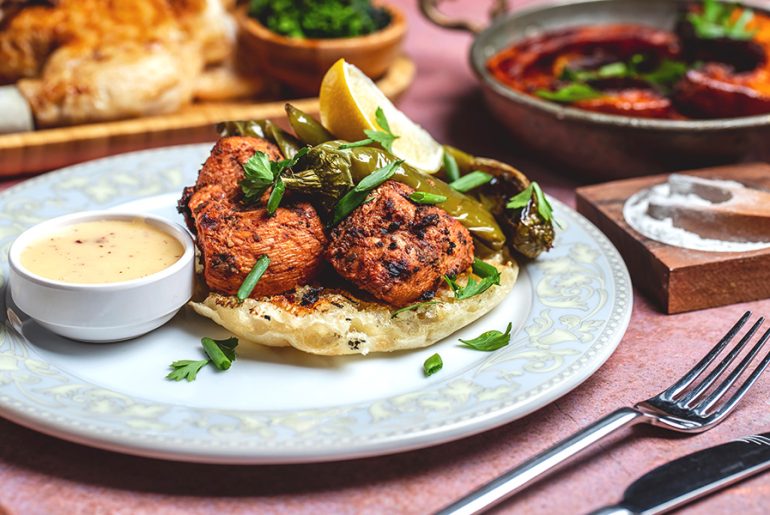Ceıvır stands as one of Turkey’s most cherished culinary traditions, offering a remarkable blend of flavors that has captivated food enthusiasts for generations. This hearty dish represents the essence of Turkish cuisine, combining rustic cooking techniques with fresh, wholesome ingredients that reflect the country’s rich agricultural heritage. From meat-based versions to bulgur wheat preparations, ceıvır offers a fulfilling meal that brings centuries-old Turkish flavors to today’s dining tables.
The Rich History Behind Ceıvır
Ceıvır has its roots in the nomadic communities of Central Asia, who carried their culinary traditions westward as they migrated to the Anatolian region. The name itself derives from Turkish words meaning “to stir” or “to mix,” perfectly describing the communal preparation process that has made this dish a symbol of family gatherings and togetherness.
Cultural Significance Through the Ages
Throughout Turkish history, ceıvır has served as more than just sustenance. Families would gather around shared meals, with elders passing down preparation techniques and secret ingredients to younger generations. This oral tradition ensured that each family developed their own unique interpretation while maintaining the dish’s fundamental character.
The dish gained particular prominence in regions like Kayseri, where local ingredients and cooking traditions shaped distinct variations. As Turkey modernized, ceıvır adapted while preserving its authentic essence, making it a perfect example of how traditional cuisine evolves without losing its cultural identity.
Traditional Ingredients and Preparation Methods
What makes ceıvır special is its adaptability and the freshness of its components. Traditional preparations often feature tender lamb or beef as the protein base, marinated in olive oil, salt, black pepper, and sometimes yogurt for enhanced tenderness.
Core Components and Flavor Profile
Fresh vegetables form another essential element, including onions, bell peppers, tomatoes, and garlic. These ingredients create a robust flavor foundation that complements the meat perfectly. The slow-cooking process allows all components to meld harmoniously, developing complex layers of taste.
Bulgur wheat variations of ceıvır offer a different but equally satisfying experience. The nutty texture of bulgur provides excellent nutritional benefits while absorbing the flavors of accompanying herbs and spices. Fresh mint, parsley, and other aromatic herbs add brightness and freshness to each bite.
The preparation begins with careful ingredient selection and proper marination when meat is involved. The cooking process emphasizes patience, allowing flavors to develop naturally through gentle simmering or slow roasting.
Regional Variations Across Turkey
Across Turkey’s diverse regions, ceıvır takes on unique forms that showcase regional produce and local cooking styles. In Turkey’s eastern provinces, cooks prefer robust preparations with braised lamb or beef that becomes incredibly tender through long, gentle cooking processes.
Coastal and Mediterranean Influences
Coastal areas often incorporate seafood into their ceıvır preparations, utilizing fresh fish and shrimp to create lighter versions that showcase Mediterranean influences. These variations highlight local catches while maintaining the dish’s characteristic flavor profile through careful seasoning with regional herbs.
Central Anatolia offers vegetarian interpretations that celebrate seasonal vegetables like eggplant and zucchini. These plant-based versions demonstrate the dish’s adaptability while showcasing the region’s agricultural abundance through vibrant spices including cumin and paprika.
The Black Sea region adds unique elements by incorporating rice and distinctive herbs such as green onions and dill, creating textural variety that enhances the overall dining experience.
Health Benefits and Nutritional Value
Ceıvır offers impressive nutritional benefits that extend beyond its delicious taste. The dish typically provides high fiber content, particularly in bulgur-based preparations, which supports healthy digestion and promotes satiety.
Immune System Support
The fresh herbs and spices commonly used in ceıvır preparation, including garlic and parsley, possess antimicrobial properties that can help strengthen the immune system. These ingredients work together to provide natural protection against common ailments.
The antioxidant content in ceıvır comes primarily from fresh vegetables and herbs. Tomatoes contribute lycopene, while various spices provide compounds that help combat oxidative stress and support overall wellness.
Weight management becomes easier when ceıvır is part of a balanced diet, as its combination of protein, fiber, and complex carbohydrates helps maintain satiety while providing essential nutrients without excessive calories.
Serving Suggestions and Perfect Pairings
Ceıvır tastes best when served warm, allowing the aromatic spices and herbs to reach their full potential. Fresh, crusty bread makes an excellent accompaniment, providing the perfect vehicle for enjoying every flavorful component.
Complementary Dishes and Beverages
Fresh salads with citrus dressing provide an excellent balance to ceıvır’s rich flavors, creating an ideal pairing for summer meals. The crisp vegetables and bright acidity balance the dish’s rich flavors wonderfully.
Traditional Turkish tea or yogurt-based drinks like ayran offer authentic beverage pairings that refresh the palate without overwhelming the dish’s unique characteristics. These drinks have been served alongside ceıvır for generations, creating time-tested flavor combinations.
Roasted vegetables or grilled accompaniments can transform ceıvır into a complete feast, with each element contributing different textures and flavors that enhance the overall dining experience.
Modern Adaptations and Contemporary Appeal
Today’s chefs continue honoring traditional ceıvır recipes while introducing modern techniques and contemporary presentation styles. This evolution demonstrates how classic dishes can maintain their authentic character while appealing to modern palates and dietary preferences.
The dish’s versatility makes it suitable for various dietary approaches, from traditional meat-based preparations to completely plant-based versions that satisfy vegetarian and vegan diners without sacrificing flavor or cultural authenticity.
Conclusion
Ceıvır stands as a flavorful Turkish specialty that combines cultural heritage with taste and health benefits. This hearty meal offers authentic tastes and healthy benefits that have been enjoyed for generations.
Whether you try ceıvır at a Turkish restaurant or make it at home, you’ll discover a dish full of wonderful flavors. Its simple ingredients and traditional cooking methods create a satisfying meal that connects you to Turkish culture.
This beloved dish shows how traditional foods can nourish both body and spirit. Adding ceıvır to your meals means enjoying a piece of Turkish heritage that families have shared for centuries.




